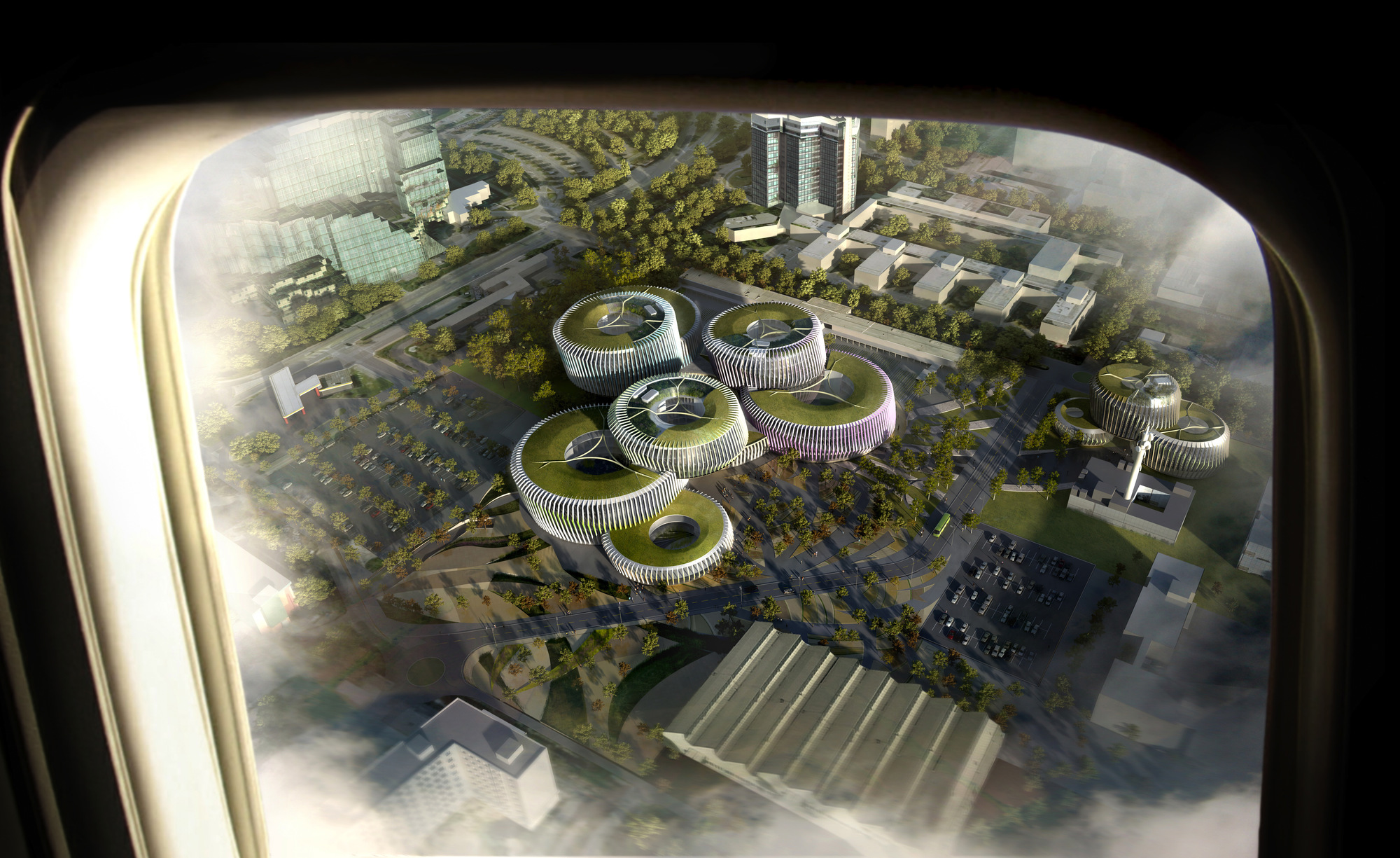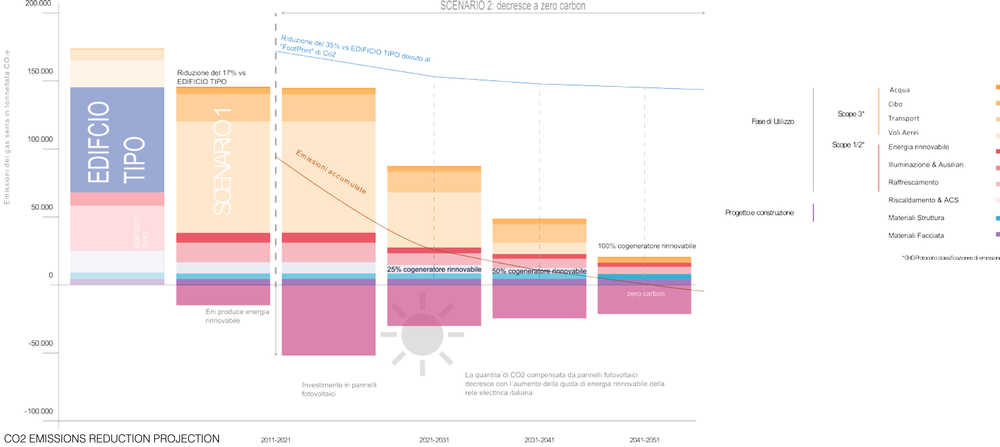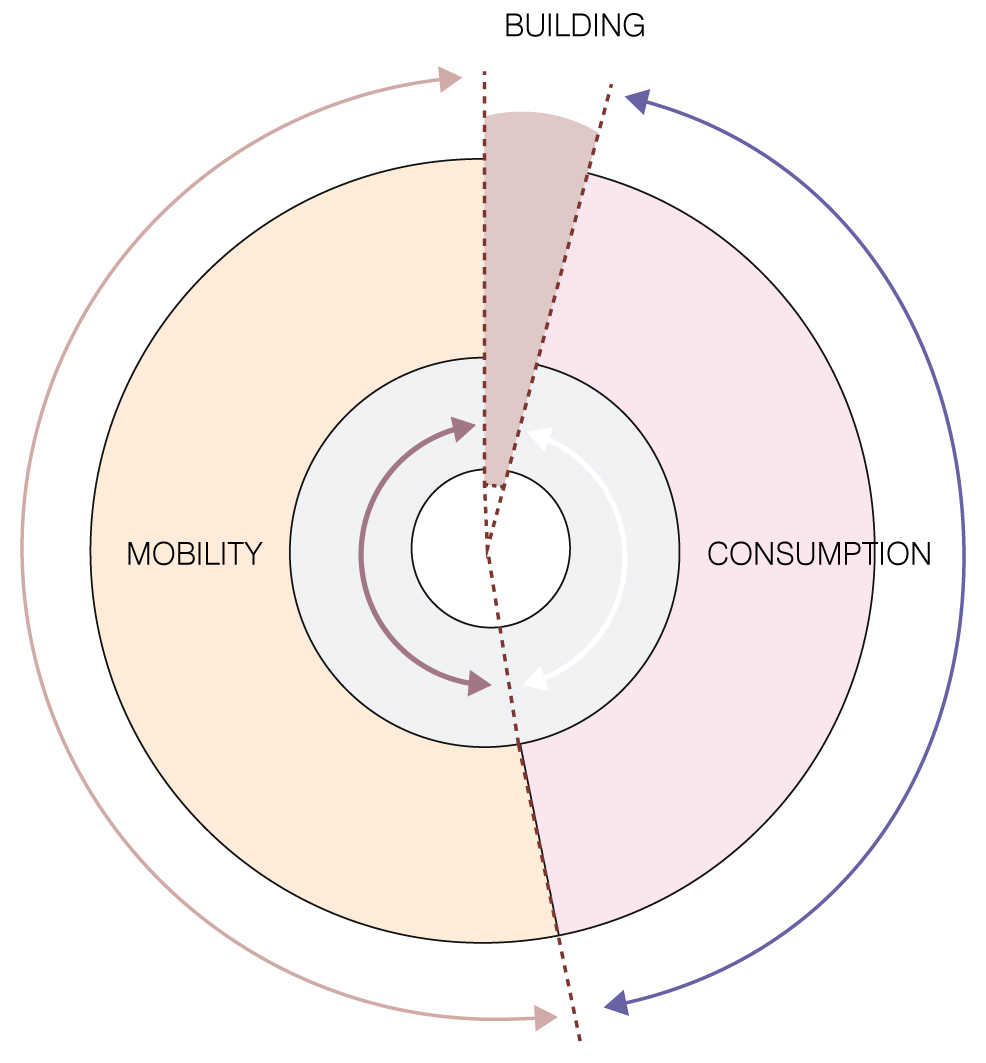

Study: Eni Headquarters, Part 4
This article is part of a series of the Materials Platform's study of the Eni Headquarters in Milan, Italy. UNStudio prepared a design for the Eni Headquarters in 2011. A sustainable approach is the backbone of the design approach of the sixth Palazzo Eni, one of Italy’s largest energy companies and one focused in integrated energy, outside of Milan. Eni is a private company focused on the discovery, refinement, transport and transformation of natural gas and petrol into power, hence the thorough demands on sustainable applications of the competition brief.
Below we map out our strategy, as designed together with our consultants.
The sustainability strategy for the design of building has been divided in the following five subjects:
1. Challenging conventions: The goal was to reduce the energy demand by 65%; satisfy the demand of energy with renewable off-site energy; and to influence user behaviours by raising the awareness of energy use through technology and stimulating an active experience for users of the building.
2. Aiming high: The goal was to achieve carbon neutrality, while at the same time considering the economical aspect in two scenarios:
Scenario One: LEED Gold and Energy Efficient Best Practice.
Scenario Two: LEED Platinum and Zero Carbon Energy Positive + Carbon Neutrality.
3. Think holistically: We are considering real data, therefore analysing CO2 emissions derived from existing buildings, public areas, transport system, consumer services, material embodied energy and food supply.
4. Focus on the performances: With data from energy and transport, parameters for planning and decision making and addressing specific social, economic, environmental and resources have been applied, hence closing the cycle of CO2 on a local scale.
5. Monitoring: To achieve long-term sustainability for the environment digital Medias are applied to monitor the key performance such as energy consumption, emissions of carbon dioxide and consumption of water in order to evaluate their progress towards its objectives in the design phase and planning. The project hereby shows people the relation between their daily choices and CO2 consumption.

In a typical office, 65% of the total emissions are from the people who are using the building. In order to obtain significant results, protocols provided by Carbon Disclosure Project (CDP) and the Green House Protocol (GTP) were applied:
• Scope 1: Emissions controlled within and generated from the building
• Scope 2: Electricity derived from the network
• Scope 3: Emissions resulting from the occupants of the building
The strategy of Scenario One aims to reduce the emissions generated by operations of the building using passive strategies, an efficient MEP system, an environmentally conscious skin and influencing the behavior of the office users. An awareness program is set to change food habits, lead to reduce the use of potable water by 40%. The choice of building materials has a strong influence on the environmental impact on the building during the construction phase. Materials with a low content of 'embodied energy' can reduce emissions by 13% compared to a building that uses traditional materials (BAU - Building As Usual).
Scenario Two incorporates points made in scenario one as well as improvement of the water system management and an increase in the use of energy from renewable sources. We also proposed to improve the central heating system, and allow the building to be a prototype for an upcoming smart grid. Scenario Two is conceived as a dynamic strategy that evolves along the life span of the building and it aims at carbon neutrality as final outcome.

Both scenarios one and two priortise high LEED standards. In Scenario One, which aims for a LEED Gold rating, strategies involve the sustainability and development of the site, water management, energy and emissions, materials and resources and indoor environmental quality.
The strategy of Scenario Two, which aims for a LEED Platinum rating, seeks to achieve progressive energy neutrality, balancing not only the energy used, but also improving the environmental conditions. To obtain this result the strategies to achieve LEED Gold are implemented, in addition to considerations of: energy and atmosphere, transport, materials and resources and innovation and design process.
UNStudio Team: Filippo Lodi, Frans van Vuure and Deepak Jawahar, Alicia Casals, Hans Kooij, Wendy van der Knijff, Marie Prunault, Machiel Wafelbakker, Patrik Noome, Xing Xiong
Partners:
Sustainability, Urban, Facade, Structure, MEP, Acoustic, Fire, Food: ARUP, Milan, Italy
Landscape: !melk landscape architecture PC, New York
Mobility: MIC, Milan, Italy
BSM: Experientia, Turin, Italy
Culture-Historic: Dorothea Deschermeier, Mendrisio, Switzerland
Visualisation: MIR, Bergen, Norway